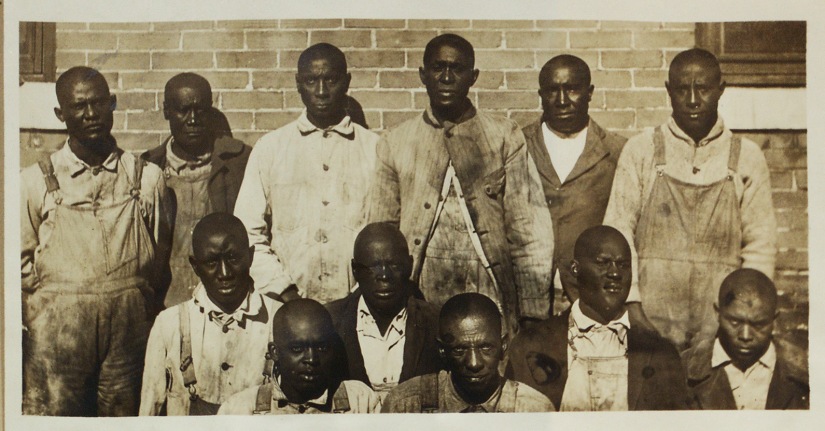
She is posting significant events in African American History for the month of February. After I read about the Arkansas Massacre I wanted to amplify the post. Cee Jaye gave me permission to do so.
Although slavery was outlawed, Black people remained at a fiscal deficit. From the beginning of the Jim Crow Era, Blacks had limited options, one was sharecropping. They worked former plantation owners land for a small share of the crop; which once harvested, was purchased by the former plantation owner at far below market value. In return for the “privilege” of employment and receiving a small portion of the crops, the owners provided a store where the Sharecroppers could buy the seed, fertilizer, food, and other life essentials.
This store was the crux of the insidious plot to keep the Sharecroppers indebted and in servitude indefinitely as every item was grossly overpriced and every account was charged exorbitant interest rates.
Sharecropping was the New Slavery.
One place where this was glaringly apparent was Elaine, Arkansas, where Black people had zero to severely limited options for employment and basic resources for survival. When WWI began and the majority of the men left to serve; remaining citizens migrated up North for better jobs leaving a shortage of workers for the cotton fields and lumberyards. The labor deficit resulted in the former plantation owners having to pay higher wages for the harvesting of cotton crops and the milling of lumber.
When the Black soldiers returned home from WW I, they wanted their full rights, e.g. their citizenship acknowledged; the right to vote; and, to receive a fair wage. The soldiers and sharecroppers came together to discuss becoming members of the Progressive Farmers and Household Union and obtaining legal counsel to help the workers to acquire fair market value for their crops.
The former plantation owners did not agree with this collaboration as they did not want their way of life disrupted and generational wealth disbanded by invasive unions and ungrateful negroes.
On September 30, 1919, with guards in place, many Black veterans and sharecropping families gathered at Hoop Spur Church to discuss the union. At approximately 11pm, the Church was riddled with gunfire and to the surprise of the attacking white men, Black guards fired back; resulting in the death of a white Railroad Agent.
Early the next day, whites had spread the word of a Negro insurrection. The city’s phone lines were cut; the sheriff called the white American Legion to Elaine; the Governor sent 583 soldiers as well as a machine gun battalion. All of the white women and children were sent to the neighboring town via train and there was an order for the immediate disarming of Negroes and if the Negroes refused to disarm; the order included the authorization to kill any Negro insurgent(s) that failed to disarm.
The vigilante posse was close to 1,000 strong and came from Arkansas and Mississippi to assist the former plantation owners/managers, sheriff’s/deputies and WW1 veterans to protect the honor of their women, children, and land from the alleged murderous and enraged Negroes.
For five days, Black men, women, and children were hunted, machine-gunned down, axed, tortured, hanged, dismembered (for souvenirs), dragged, and burned alive.
Heartbreakingly for the Black people who hid in the woods, when the troops arrived, the survivors thought they were safe and as they exited the woods they were either murdered or arrested.
Nationwide newspapers reported and military leadership cosigned the slavery-esque rhetoric purported by the white community contending that due to outside union agitators the ignorant Negro Sharecroppers conspired and planned the insurrection to murder the former plantation owners and steal their land.
On October 7th, the “insurrection” was declared over and through torture, confessions were obtained allowing the imprisonment of Blacks accused of inciting their own massacre.
As a result, ONE HUNDRED TWENTY surviving “insurrectionists” were indicted by the grand jury and detained until their alleged union participation could be verified; many union members were charged with crimes ranging from assault to night riding to murder.
Twelve Black sharecroppers, who became known as the Elaine 12, were convicted of murdering three white men (two of which accidentally shot each other). The Elaine 12: Albert Giles, Alfred Bands, Ed Coleman, Joe Fox, Paul Hall, Ed Hicks, Frank Hicks, Joe Knox, John Martin, Frank Moore, Ed Ware, and William Worldlaw.
From one of the twelve convicted Black men, anti-lynching activist and journalist, Ida B. Wells-Barnett, received a letter requesting assistance. Dressing as a sharecropper, Ms. Ida went and found a way to interview the twelve prisoners; their wives, and eye-witnesses. In a 1920 pamphlet, she chronicled the atrocities and the unbelievable cruelties suffered by the Black residents of Elaine.*
The Wells-Barnett document described countless heinous acts perpetrated against the Black sharecroppers; their families; and neighbors. Those in power were able to block the press from reporting and even attempted to declare that the massacre never occurred. Fortunately, Ms. Ida B. Wells-Barnett’s expose was filled with irrefutable proof as well as the eye-witness accounts from survivors and the familial stories passed down over time.
However, even with these large amounts of proof, the nation did not receive the truth about the massacre until the 1923 Supreme Court ruling overturning six of the convictions citing the confessions were obtained through torture, and the mob-fueled trial violated the prisoners right to due process.
While no one knows how many hundreds of Blacks were massacred, a military mission report praised the restraint exhibited by the troops; and declared only three lives were lost: two negroes and one white soldier.
The N.A.A.C.P. estimated that more than 200 men, women, and children died during the Elaine massacre; however, historians believe that the total number of lives lost greatly exceeds two hundred souls.
On November 5, 2019, ONE HUNDRED YEARS AFTER the Elaine massacre, each of the Exonerated 12 received a marker of commemoration and induction into the Arkansas Civil Rights Heritage Trail.
ADDITIONAL INFORMATION:
Ida B. Wells-Barnett Archive:


Thank you, Alvarado and, of course, Cee Jaye for this history lesson.God bless.
LikeLiked by 1 person
And thank you for stopping by! Mona
LikeLiked by 1 person